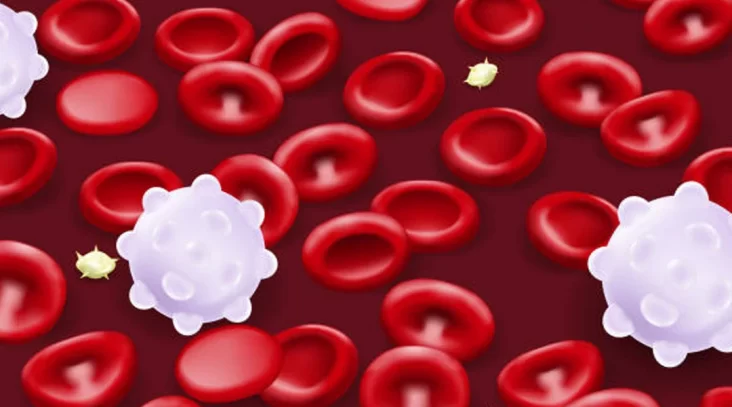Thalassemia is a genetic blood condition that develops when the body doesn’t produce enough of the protein haemoglobin. The red blood cells’ capacity to transport oxygen to the body’s organs and carbon dioxide from the tissues and organs back to the lungs is compromised when haemoglobin is absent from the body.
People with Thalassemia are mostly from South Asia, Southeast Asia, the Middle East, or the Mediterranean area. Every year on May 8, people throughout the world observe World Thalassemia Day. This day is set aside to increase public knowledge of the thalassemia illness, its signs and symptoms, treatment options, and the value of an early diagnosis. Let us look at the impact of thalassemia on blood in this article.
Thalassemia Symptoms
The intensity and mode of a person’s illness development determine the symptoms of Thalassemia. Slow development, belly enlargement, black urine, weariness, weakness, yellow skin, and facial bone abnormalities are just a few of the signs of thalassemia.
Thalassemia Types
The various types of thalassemia are divided into:
- Alpha or Beta Thalassemia
The two halves of our haemoglobin are alpha and beta. The haemoglobin in people with thalassemia is either alpha or beta deficient. Low levels of alpha are referred to as thalassemia.
A condition called beta thalassemia is distinguished by unusually low beta levels.
- The degree of thalassemia (trait, carrier, intermedia, or major)
Thalassemia trait carriers may not exhibit any symptoms or may only have mild anaemia indications. A person with significant thalassemia may have severe symptoms that necessitate frequent blood transfusions.
Thalassemia and Anaemia
All of the cells in our body need oxygen to operate correctly, which is delivered to them by red blood cells. A person feels exhausted, weak, and has trouble breathing when they don’t have enough healthy red blood cells to provide oxygen to their cells. Anaemia is the name given to this disorder.
People with thalassemia frequently experience mild to severe anaemia. Serious anaemia can damage organs and, in severe situations, result in death.
Thalassemia and Genetics
Similar to how hair colour and body form are handed down from one generation to the next, thalassemia features are passed down from parents to children. The kind of thalassemia handed down from parent to kid depends on how many thalassemia traits an offspring acquires from their parents. A child that receives a beta-thalassemia trait from both parents—their father and mother—will be born with beta-thalassemia major. If a person inherits an alpha thalassemia trait from their mother and typical alpha portions from their father, they will have an alpha thalassemia trait.
Diet for Thalassemia
People with thalassemia are urged to eat a healthy diet. They must, however, pay close attention to how much iron they are getting via their food. The following foods are some options for them:
- Protein Foods
Protein is a crucial component for boosting immunity and promoting development. Patients with thalassemia must avoid iron-rich protein meals. They could think about including cheese, almonds, eggs, yoghurt, nuts, and beans in their diet.
- Consume Calcium-Rich Foods
Calcium-rich foods like milk, eggs, spinach, and others are beneficial for thalassemia patients because the majority of them have weak bones. Additionally, it’s essential to get enough vitamin D to prevent thalassemia. It just takes 10 minutes of sun exposure to get the recommended amount of vitamin D for the day.
- Add Folic Acid foods
Lentils, beetroot, bananas, and sweet potatoes can all aid with thalassemia symptom relief. This is because these meals contain folic acid, which helps to produce more red blood cells. Patients with thalassemia should eat two giant bananas every day to see the effects. On the Gigadocs E-Healthcare app, they can also schedule a dietician teleconsultation. They will learn about their food plan, which is tailored to their age and, if any, comorbidities, thanks to this digital consultation.
Thalassemia and Pregnancy
The diagnosis of thalassemia frequently occurs during pregnancy or soon after delivery. Additionally, it affects the development of the reproductive organs and raises a number of issues related to pregnancy. Women with thalassemia may have difficulties conceiving; therefore those hoping to become pregnant should monitor their iron levels.
Pregnancy comes with the following dangers for women with thalassemia:
- An increased risk of infection
- Diabetes during pregnancy
- Problems with the heart
- The thyroid gland is underactive in the disease known as hypothyroidism (low thyroid).
- A projected increase in the frequency of blood transfusions.
- Low bone density
Regular thalassemia monitoring entails obtaining fluid samples from the placenta or the baby at 11 and 16 weeks of pregnancy.
Thalassemia Diagnosis
People with mild to extreme forms of thalassemia experience severe anaemia symptoms at a young age, which aids in early thalassemia diagnosis. People with less severe thalassemia might not be aware of it until they exhibit anaemia-related symptoms or until a doctor notices it during routine blood work or another test.
Thalassemias can run in families since they are inherited diseases. Some people find out about their thalassemia from family members who also have the condition.
Thalassemia Treatment
For the remainder of their lives, those with thalassemia major or other severe variants will require medical care.
The following are the key thalassemia treatments:
- In severe situations, once a month blood transfusions are needed for treating and preventing anaemia.
- Chelation therapy is a medication-assisted method to eliminate the excess iron from the body that builds up after routine blood transfusions; certain thalassemia patients experience iron build-up even without transfusions and require treatment for this.
- The best treatment for thalassemia is a stem cell or bone marrow transplant, although these procedures are not carried out very frequently because of the inherent hazards.

